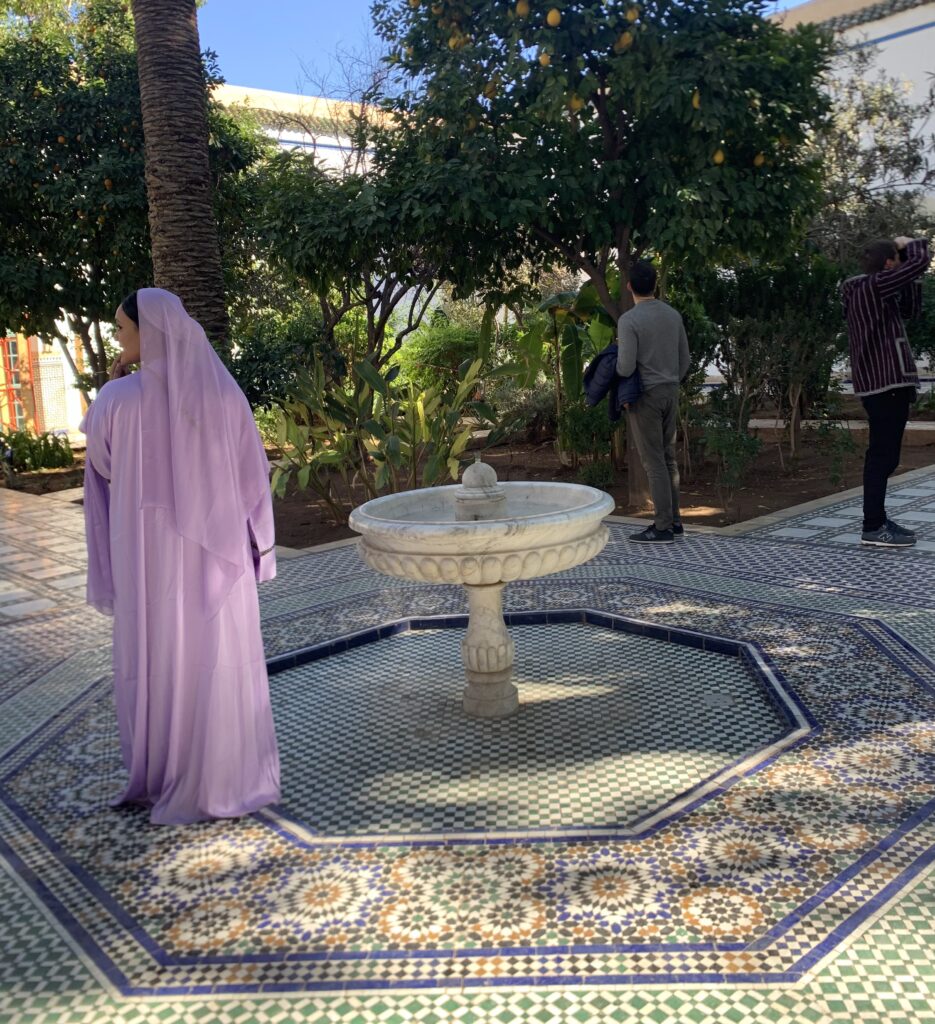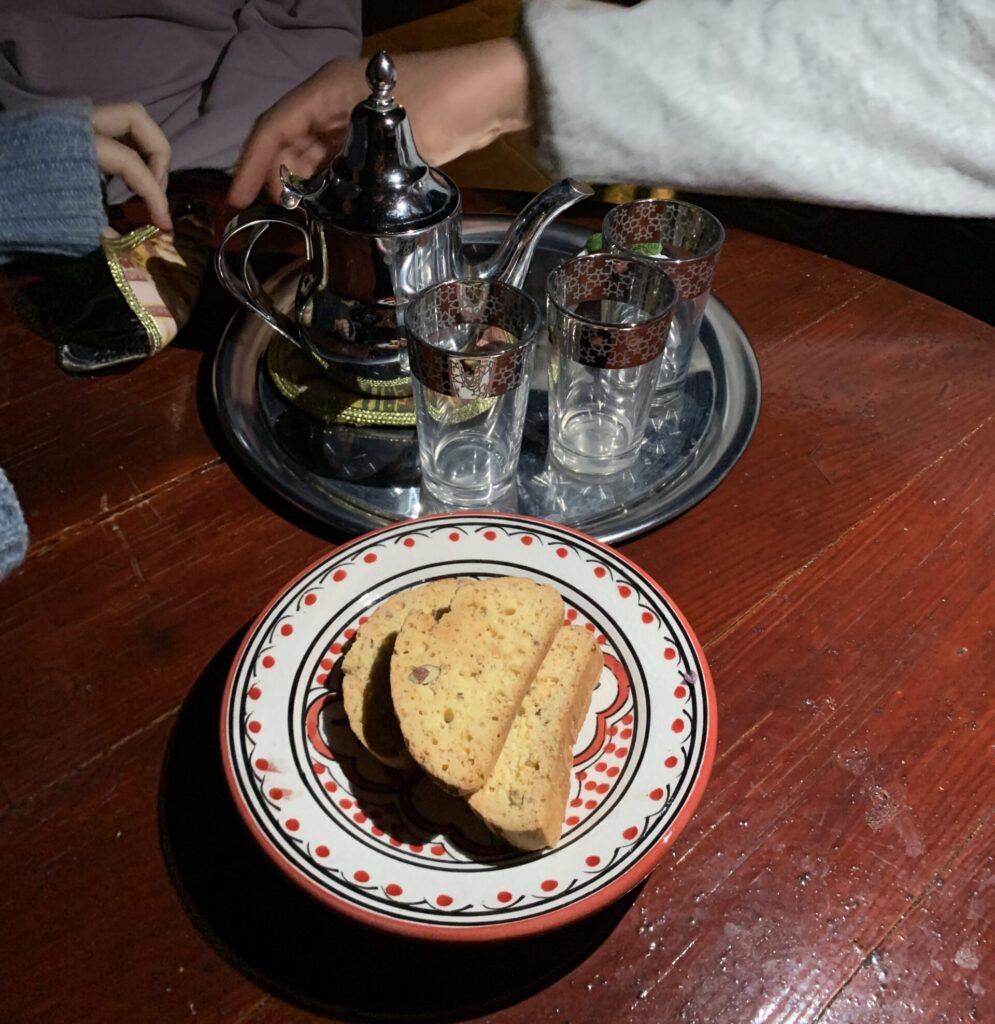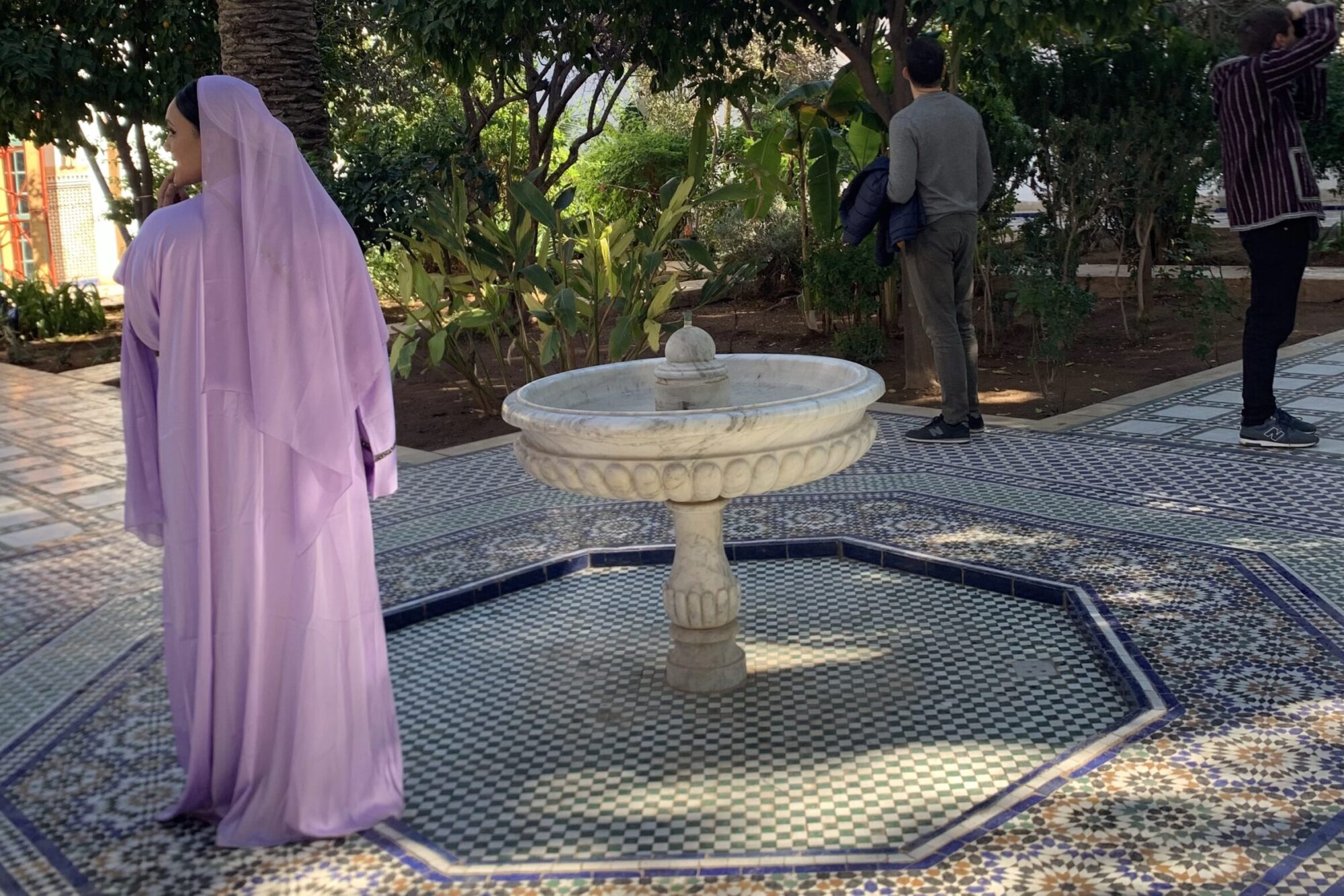In Marrakech it is 22 o’clock of a clear evening, and beyond the city lights that frame the sky you can see some stars. The city is in overheating, and passers-by walk fast, going from one street to another of the city with agility and confidence that only habit can give. The buildings rise in a twisted and entangled disorder, seemingly confused. The structure of the city recalls the life below, where passers-by mix and mingle but never clash, and where cultures come together in a secret harmony. In these streets the digital maps are unaware of the secret passages that connect one road to another, and what is usually a linear movement becomes the search for an end to the long and intricate maze that are the streets of Marrakech. Finding each destination is no longer just a matter of arrival, but of real experience in the passage from point A to point B, decorated by the aged and worn colors of the walls hidden in the shadow of those streets where the light never arrives.
Marrakech is a lively and active city, but it reserves corners of peace and tranquility for those who know how to look for them. Nestled between the remote corridors of the far-flung Marrakech rises a palace. High and protruding, from under the infrastructure that covers Marrakech you can’t see the end. In this palace there is a hotel. Its interior is deep, but towards the other. A flight of stairs runs all the way up to the fifth and last floor.
Ringing the building’s bell, a young woman opens the door with a warm smile: “Welcome, my friends! It’s so wonderful to have you here!” Her smile was one of the brightest one could ever see. “Let me show you the room first, then I’ll make you some tea to help you feel right at home.”
Like many Moroccan palaces, balconies overlook the center. Decorated in a candied white, seasonal flowers and with minimal but effective and significant decorations, the palace has a secret corner that guarantees its surprise effect. Leaving behind the rusty little porticocina on the fifth floor, a narrow spiral staircase of wrought iron climbs up to a balcony illuminated by a lamp with dim light, from which it is possible to see the city in all its absolute magnificence. The starry night of Marrakesh is a wonder that everyone should have the chance to know at least once in their life.
Meet Oumaima

Oumaima joined us in that cinematic nocturne paradise. With a deep breath we embraced the gentle, warm breeze of Marrakech in January at midnight, the smell of the mint tea rising from the delicate and detailed tea pot she’d just elegantly set on the table with a couple of dry biscuits to try. Also the table was decorated, perfectly representing the Moroccan tradition, with geometric and colourful shapes marked by a black, surrounding line.
In front of that cup of tea we started talking, and from the empty words conversations of incredible understanding were created. ” I was married,” he said lightly. ” But what was supposed to be my man did not treat me as I wanted: he did not respect me, he took me for granted, he had forgotten that I was his wife. He didn’t love me. So, I left.”
In Marrakech finding an apartment is expensive and hard, especially after the earthquake that in late 2023 shook the city and region. After the collapse of the house where she had grown up with her sister and the whole family since childhood, Oumaima had to move to the area of Bradi, in the center of the city, hosted by a family friend. Working long shifts and no days off in the city hotel, she soon managed to afford a new apartment where to stay while the building in which she grew up and calls home was being renovated. And not only.
“In the new neighbourhood, in the city, I felt lonely, detached from the rest of the people. People in cities don’t care, they judge, they are rushing, while me I just wanted to laugh and feel at home again.”
Oumaima is a kind and lovely person, who’s given her entire life to the wellbeing and happiness of her parents and family. While working a full time position, her and her sister take care of the house and guarantee a good life to both her parents.
Just recently, she even made her father’s dream come true once she bought him a ticket to Mecca.
Her voice trembled under the weight of her own dreams and those of his family. As a faithful Muslim her dream is to go to Mecca on a religious pilgrimage. At the same time, however, her first and main desire is to ensure that her beloved mother also faces this pilgrimage
“It’s a dream, but it’ll take time. I want to take care about my mum first, then I’ll take time to think about myself. Me and my sister made a promise.”
Oumaima has an incredibly positive attitude to life, one that shocks the spoiled eye, considering how hard life has been on her. Faithful and strong in her belief that Allah does everything for a reason, she’s conscious that anything that happens to you, if taken the right way, can make you stronger.
She doesn’t want to impact others’ happiness by being positive and not being sad in the first place, and she wants to be reminded as a good person, as a gift to those around her.
That’s why I will never be poor: cause I helped my father making his dream come true. And I will do the same with my mom’s. In the end, we make money, money doesn’t make us.
The day I succeeded in making my father’s dream come true, is when I became the richest woman on this planet.
The importance of tea in the Moroccan tradition and how it’s made

Steaming, warm, in silver meticulously decorated to leave questions about how much culture passed down from generation to generation can hide inside a work of art of such class and style. And the taste was no less. Moroccan tea is something sensational, a must try at least once in your life. ” It is a mint tea,” explains Oumaima, “and has a key role in Moroccan culture.”
Tea is not only an emblem of Moroccan culture, but also a key element in the daily life of the population, a symbol of hospitality and social interaction.
Typically mint tea (known as “atay bil na’na”), the Moroccan tea is offered to guests as a sign of respect and welcome, whether visiting a friend’s home, a family gathering, or even entering a shop or restaurant. Around a nice tray of hot tea, families and friends gather to enjoy each other’s company. The tea is so common, that it is served even multiple times during the day, especially during “siyam” (mid-afternoon) or after dinner.
The process of preparing and serving tea
Behind the preparation of the Moroccan mint tea lays the art and precision of boiling green tea leaves, adding fresh mint, and sweetening it with generous amounts of sugar. Experience and specific skills, such as the tea being poured from a height to aerate it and in this way adding to the flavour and creating a frothy appearance, are fundamental to guarantee the typical outstanding result.
Fundamental is also the way the tea is made, served, and consumed. Often accompanied with biscuits or pastries like Ghriba (almond or coconut-based cookies that are soft on the inside and slightly crunchy on the outside), fekkas (crunchy, biscuit-like cookies that can be made with a variety of ingredients like nuts, dried fruits, and sometimes spices like anise or cinnamon) or Kaab el Ghazal (crescent-shaped pastries filled with almond paste and often flavoured with orange blossom water).
Tea is also often included in special occasions, including weddings, holidays, and festivals, as well as Eid al-Fitr, Eid al-Adha, and other important holidays. In these cases, the tea is usually served in ornate glasses and presented in silver teapots.


Pingback:Cristina: A New Life in the Heart of Oman - HEAD ABROAD